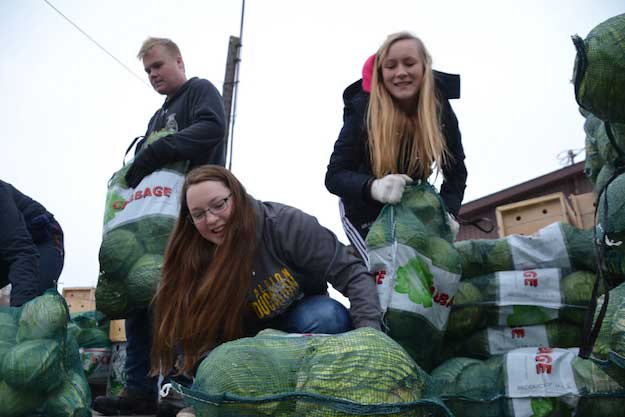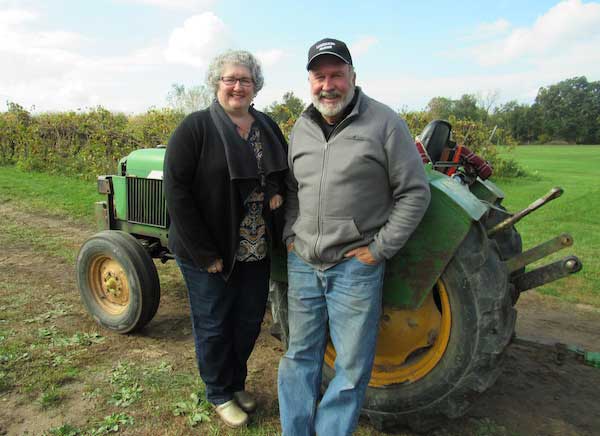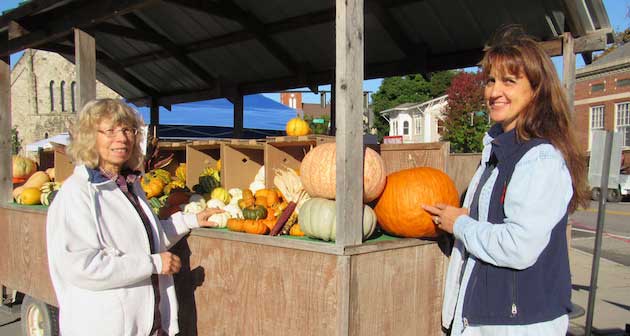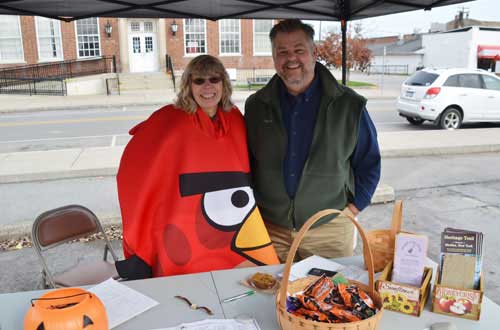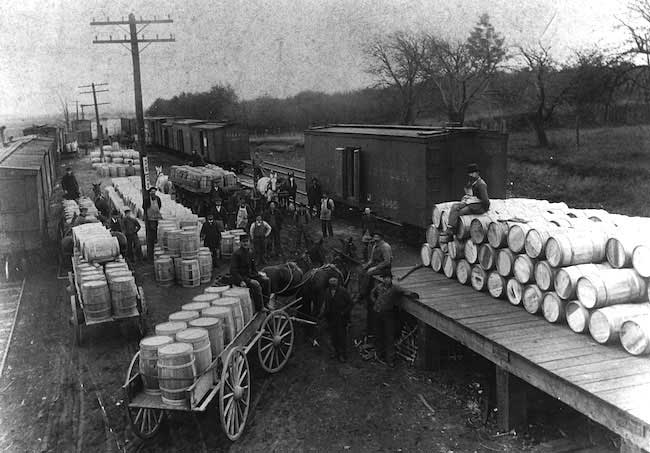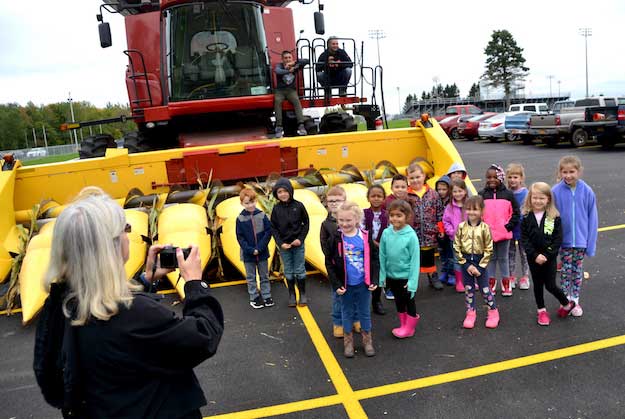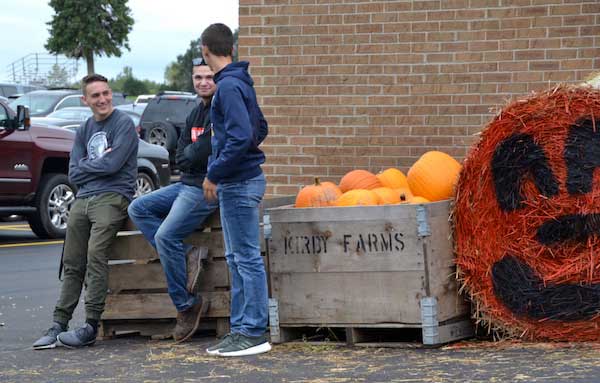USDA launches second round of payments to farmers hurt in trade fight
Press Release, US Department of Agriculture

Photo by Tom Rivers: Corn is pictured in Albion in August 2016. The USDA is providing $192 million to corn growers to help offset some of the impact of a trade dispute. Soybeans are getting $7,259,400 or 76 percent of the $9,567,400 total.
At the direction of President Donald J. Trump, U.S. Secretary of Agriculture Sonny Perdue has launched the second and final round of trade mitigation payments aimed at assisting farmers suffering from damage due to unjustified trade retaliation by foreign nations. Producers of certain commodities will now be eligible to receive Market Facilitation Program (MFP) payments for the second half of their 2018 production.
“The President reaffirmed his support for American farmers and ranchers and made good on his promise, authorizing the second round of payments to be made in short order,” Perdue said. “While there have been positive movements on the trade front, American farmers are continuing to experience losses due to unjustified trade retaliation by foreign nations. This assistance will help with short-term cash flow issues as we move into the new year.”
Secretary Perdue announced in July that USDA would act to aid farmers in response to trade damage from unjustified retaliation. President Trump directed Secretary Perdue to craft a short-term relief strategy to help protect agricultural producers while the Administration works on free, fair, and reciprocal trade deals to open more markets to help American farmers compete globally. In September, USDA initiated three programs to aid American agriculture in sustaining the short-term damages associated with the trade disputes and securing long-term, stable export markets.
Details of programs currently employed by USDA:
USDA’s Farm Service Agency (FSA) has been administering MFP to provide the first payments to almond, corn, cotton, dairy, hog, sorghum, soybean, fresh sweet cherry, and wheat producers since September 2018 for the first 50 percent of their 2018 production.
USDA’s Agricultural Marketing Service (AMS) is administering a food purchase and distribution program to purchase up to $1.2 billion in commodities unfairly targeted by unjustified retaliation. USDA’s Food and Nutrition Service (FNS) is distributing these commodities through nutrition assistance programs, such as The Emergency Food Assistance Program and child nutrition programs. So far, USDA has procured some portion of 16 of the 29 commodities included in the program, totaling more than 4,500 truckloads of food. AMS will continue purchasing commodities for delivery throughout 2019.
Through the Foreign Agricultural Service’s (FAS) Agricultural Trade Promotion (ATP) program, $200 million is being made available to develop foreign markets for U.S. agricultural products. The program will help U.S. agricultural exporters identify and access new markets and help mitigate the adverse effects of other countries’ restrictions. The application period closed in November with more than $600 million in requested activities from more than 70 organizations. FAS will announce ATP funding awards in early January.
Market Facilitation Program
Producers need only sign-up once for the MFP to be eligible for the first and second payments. The MFP sign-up period opened in September and runs through January 15, 2019, with information and instructions provided at www.farmers.gov/mfp. Producers must complete an application by January 15, 2019 but have until May 1, 2019 to certify their 2018 production. The MFP provides payments to almond, cotton, corn, dairy, hog, sorghum, soybean, fresh sweet cherry, and wheat producers who have been significantly impacted by actions of foreign governments resulting in the loss of traditional exports. The MFP is established under the statutory authority of the Commodity Credit Corporation CCC Charter Act and is under the administration of USDA’s FSA. Eligible producers should apply after harvest is complete, as payments will only be issued once production is reported.
For farmers who have already applied, completed harvest, and certified their 2018 production, a second payment will be issued on the remaining 50 percent of the producer’s total production, multiplied by the MFP rate for the specific commodity.
Market Facilitation Program
Here is a list of the crops in the program, the payment rate and estimated cost to the USDA:
• Almonds, 3 cents a pound, $63.3 million
• Cotton, 6 cents a pound, $553.8 million
• Corn, 1 cent a bushel, $192 million
• Dairy (milk), 12 cents per hundredweight, $254.8 million
• Pork (hogs), $8 pe rehaz, $580.6 million
• Soybeans, $1.65 per bushel, $7,259,400
• Sorghum, 86 cents per bushel, $313.6 million
• Sweet cherries (fresh), 16 cents a pound, $11.5 million
• Wheat, 14 cents a bushel, $238.4 million
MFP payments are limited to a combined $125,000 for corn, cotton, sorghum, soybeans, and wheat capped per person or legal entity. MFP payments are also limited to a combined $125,000 for dairy and hog producers, and a combined $125,000 for fresh sweet cherry and almond producers.
Applicants must also have an average adjusted gross income for tax years 2014, 2015, and 2016 of less than $900,000. Applicants must also comply with the provisions of the Highly Erodible Land and Wetland Conservation regulations.






























